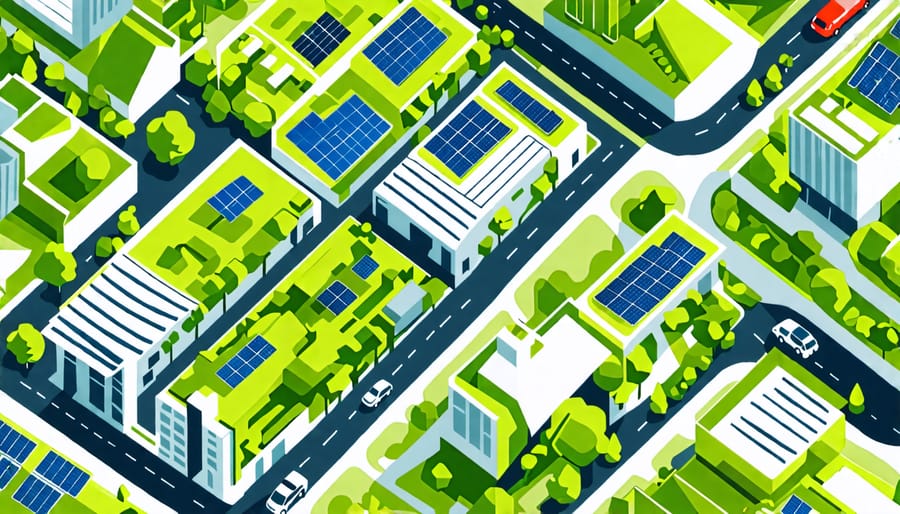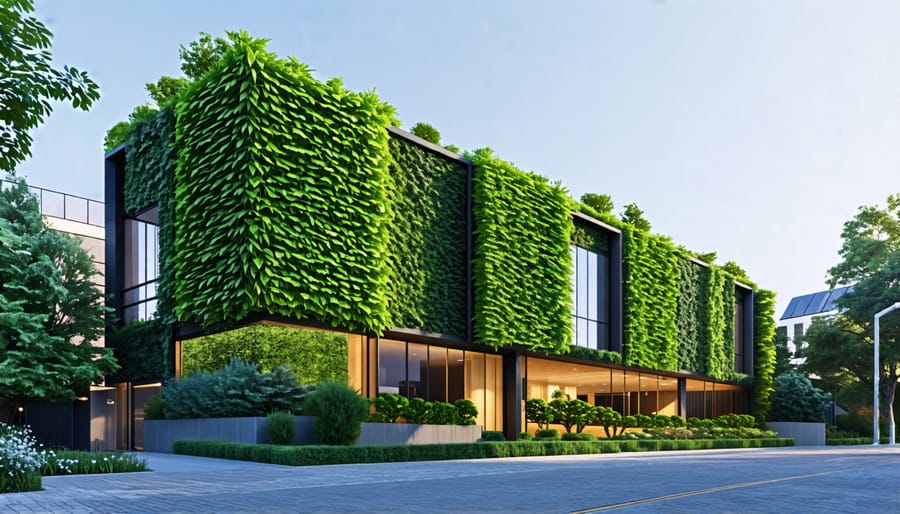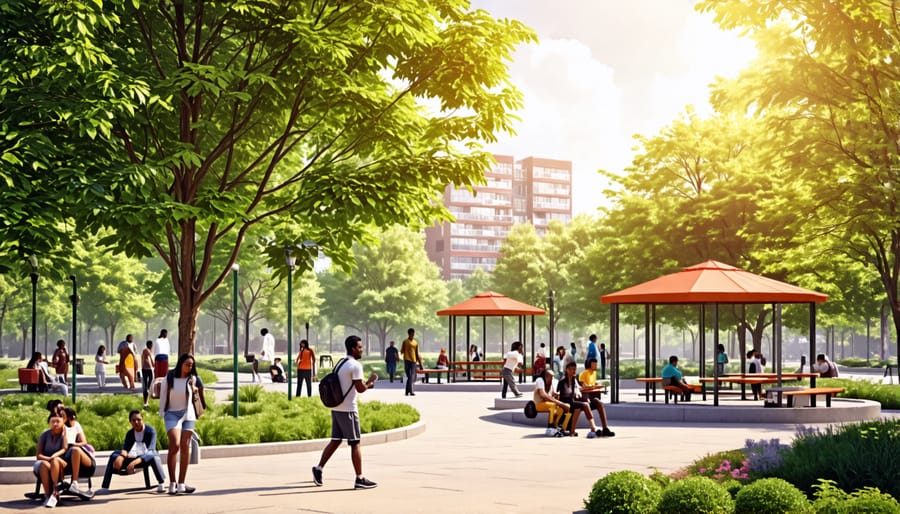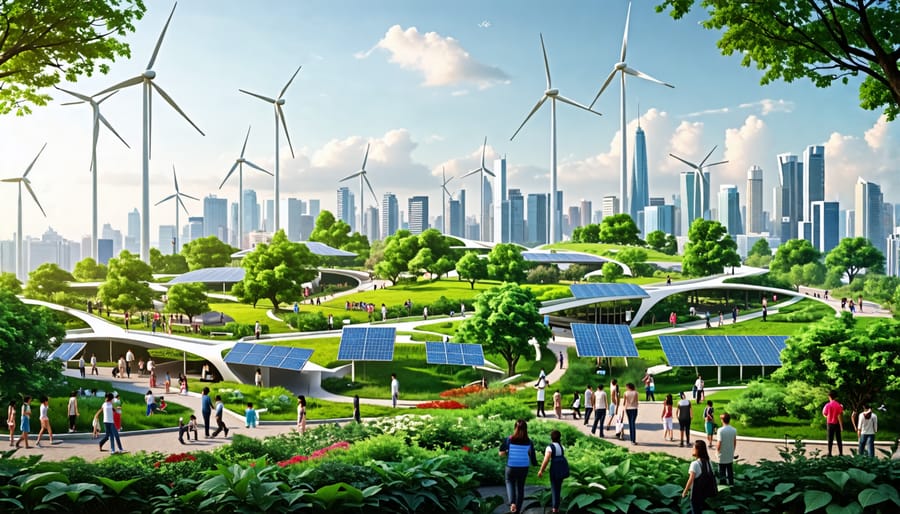Embark on a journey to uncover the essence of urban sustainability—a transformative force shaping our cities and our future. In this article, we dive deep into the heart of what it means to create thriving, resilient urban environments that harmonize the needs of people, planet, and prosperity.
Through expert insights, real-world case studies, and forward-thinking principles, we’ll illuminate the path towards building cities that stand the test of time. Join us as we explore the cutting-edge strategies and innovative approaches that are redefining urban development, from green infrastructure and renewable energy to community engagement and circular economy models.
Whether you’re an architect, engineer, project manager, or industry decision-maker, this comprehensive guide will equip you with the knowledge and inspiration to drive meaningful change in your projects and communities. Get ready to discover the power of urban sustainability and unlock a brighter, more sustainable future for generations to come.
The Three Pillars of Urban Sustainability

Environmental Sustainability
Environmental sustainability is a cornerstone of urban sustainability, focusing on practices that help cities minimize environmental impact while supporting growth and development. Green building is a prime example, with the construction industry adopting eco-friendly materials, energy-efficient designs, and sustainable construction methods to reduce the carbon footprint of urban structures. The use of clean and renewable energy sources, such as solar, wind, and geothermal power, is another critical aspect of environmental sustainability in cities. By transitioning away from fossil fuels, urban areas can significantly decrease greenhouse gas emissions and improve air quality. Efficient transportation systems, including well-designed public transit networks, bicycle infrastructure, and walkable neighborhoods, also play a vital role in reducing urban environmental impact. These strategies not only cut down on vehicle emissions but also promote healthier lifestyles and more vibrant communities. As cities continue to grow and evolve, prioritizing environmental sustainability through green building, clean energy, and efficient transportation will be essential for creating resilient, livable urban spaces that thrive in the face of global challenges.
Economic Sustainability
The economic pillar of urban sustainability focuses on fostering resilient, inclusive urban economies that provide green jobs and equitable opportunities for all. This involves attracting and supporting businesses that prioritize environmental stewardship, social responsibility, and innovative solutions. By creating an enabling environment for sustainable enterprises, cities can generate employment opportunities in sectors such as renewable energy, green building, waste management, and sustainable transportation. Additionally, investing in education, skills training, and entrepreneurship programs helps ensure that the local workforce is equipped to thrive in a green economy. Economic sustainability also entails promoting circular economy principles, where resources are used efficiently, waste is minimized, and materials are repurposed or recycled. By fostering collaboration between the public and private sectors, cities can develop policies and incentives that encourage sustainable business practices and drive long-term economic resilience.
Social Sustainability
Social sustainability is a crucial pillar of urban sustainability, focusing on creating livable, inclusive, and equitable communities. It emphasizes the importance of fostering a sense of belonging, social cohesion, and community engagement. Affordable housing is a key aspect of social sustainability, ensuring that all residents have access to safe, decent, and affordable living spaces. This helps prevent displacement and promotes diverse, vibrant neighborhoods. Accessible public spaces, such as parks, community centers, and recreational facilities, play a vital role in enhancing livability and encouraging social interaction. These spaces provide opportunities for people to connect, engage in activities, and build a strong sense of community. By prioritizing social sustainability, urban planners and construction professionals can create cities that not only thrive economically and environmentally but also nurture the well-being and quality of life of their residents.
Innovative Urban Sustainability Practices

Regenerative Architecture
Regenerative architecture takes urban sustainability to the next level by designing buildings that not only minimize their environmental impact but actively generate more resources than they consume. These cutting-edge structures harness renewable energy sources, such as solar, wind, and geothermal, to power their operations and even feed surplus energy back into the grid. They also incorporate features like rainwater harvesting, on-site waste treatment, and urban agriculture to create closed-loop systems that regenerate resources. Examples include the Bullitt Center in Seattle, which produces 60% more energy than it uses, and the Liuzhou Forest City in China, designed to absorb nearly 10,000 tons of CO2 annually. As more projects embrace regenerative design principles, they demonstrate the potential for buildings to actively contribute to the health and resilience of urban ecosystems, setting a new standard for sustainability in the built environment.
Smart City Infrastructure
Smart city infrastructure harnesses advanced digital technologies and data analytics to optimize urban systems for enhanced sustainability. By leveraging the Internet of Things (IoT), sensors, and real-time data collection, cities can gain valuable insights into energy consumption, water usage, waste management, and transportation patterns. This data-driven approach enables informed decision-making and targeted interventions to reduce resource waste, improve efficiency, and minimize environmental impact.
For example, smart energy grids can intelligently balance supply and demand, integrating renewable energy sources and reducing reliance on fossil fuels. Smart water management systems can detect leaks, optimize distribution, and encourage conservation. Intelligent waste management solutions can streamline collection routes, improve recycling rates, and reduce landfill waste. Moreover, smart transportation networks can optimize traffic flow, reduce congestion, and promote sustainable mobility options like electric vehicles and bike-sharing.
By embracing smart city infrastructure, urban areas can become more resilient, adaptable, and sustainable. However, implementing these technologies requires robust data governance, cybersecurity measures, and public-private partnerships. As cities continue to evolve and face growing sustainability challenges, the adoption of smart city solutions will be crucial in building a greener, more livable future for urban communities.
Nature-Based Solutions
Nature-based solutions, such as urban green infrastructure, play a vital role in enhancing the resilience and livability of sustainable cities. By integrating green spaces, parks, green roofs, and permeable surfaces into the urban fabric, cities can mitigate the impacts of climate change, reduce urban heat island effects, and improve air and water quality. These nature-based approaches also provide essential ecosystem services, such as stormwater management, biodiversity conservation, and carbon sequestration. Moreover, urban green infrastructure contributes to the well-being of city dwellers by offering recreational opportunities, reducing stress, and promoting physical activity. As cities face the challenges of rapid urbanization and climate change, incorporating nature-based solutions into urban planning and design becomes increasingly crucial for building resilient and sustainable communities. By prioritizing the implementation of green infrastructure, cities can create healthier, more adaptive environments that benefit both people and the planet.

Measuring Progress and Setting Goals
Measuring progress and setting goals are crucial components of urban sustainability initiatives in the construction industry. Sustainability metrics provide a quantitative framework for assessing the environmental, social, and economic impacts of projects, allowing stakeholders to track performance and identify areas for improvement. Key performance indicators (KPIs) such as energy efficiency, water conservation, waste reduction, and carbon emissions serve as benchmarks for evaluating the sustainability of buildings and infrastructure.
To drive continuous improvement, construction professionals must establish clear sustainability targets and develop action plans to achieve them. These targets should be specific, measurable, achievable, relevant, and time-bound (SMART), ensuring that they are both ambitious and realistic. By setting goals, organizations can align their efforts, prioritize resources, and foster a culture of accountability and innovation.
Regular monitoring and reporting of sustainability metrics are essential for gauging progress and making informed decisions. Building information modeling (BIM) and other digital tools can streamline data collection and analysis, enabling real-time performance tracking and facilitating collaboration among project stakeholders. Transparent communication of sustainability outcomes helps build trust with clients, regulators, and the public, demonstrating a commitment to responsible development.
Benchmarking against industry best practices and leading sustainability standards, such as LEED, BREEAM, and the Living Building Challenge, provides valuable insights and inspiration for setting goals and refining strategies. By learning from the successes and challenges of others, construction professionals can accelerate their own sustainability journeys and contribute to the collective advancement of the industry.
Ultimately, measuring progress and setting goals are not just about numbers; they are about driving meaningful change and creating a more sustainable built environment for future generations. By embracing these practices, the construction industry can lead the way in shaping resilient, thriving, and equitable urban communities.
Conclusion
In conclusion, urban sustainability is a multifaceted concept that encompasses environmental, social, and economic dimensions. It is crucial for construction professionals to understand and implement sustainable practices to mitigate the industry’s environmental impact, improve quality of life in urban areas, and ensure the long-term viability of our cities. As the world continues to urbanize at an unprecedented rate, the urgency of embracing urban sustainability cannot be overstated.
Construction industry decision-makers, architects, engineers, and project managers play a pivotal role in shaping the future of our built environment. By integrating sustainable design principles, adopting green building technologies, and prioritizing renewable energy sources, professionals can drive positive change and contribute to the creation of resilient, livable, and thriving urban communities.
The path to urban sustainability requires collaboration, innovation, and a shared commitment to building a better future. As a construction professional, you have the power to make a significant impact. Embrace the challenge, stay informed about the latest sustainable practices, and lead by example in your projects. Together, we can build cities that are not only environmentally responsible but also socially inclusive and economically prosperous for generations to come.

